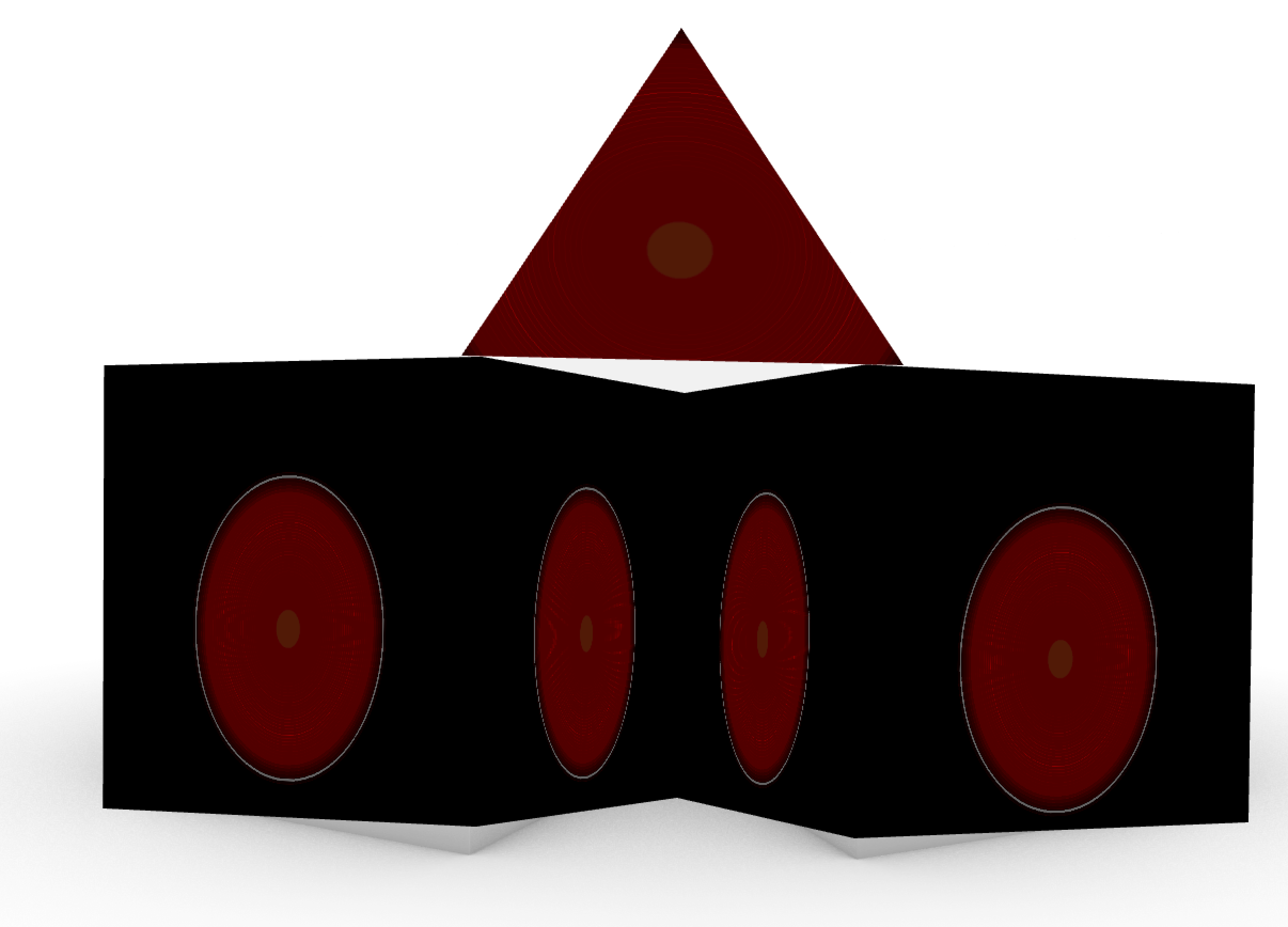2001 : Hacked | Cosmos
This projection piece is meant to reverse engineer elements from the movie 2001 Space Odyssey. The graphics are inspired by the cosmos.
produced by: Eden Chahal
Introduction
A sky glowing with stars starts moving in a cosmic round. The sparkles slowly settle for us to guess "2021 :" appearing on the pyramid that crowns the spaceship-like structure. It has already begun to disappear when we successively discover the rest of the title. Sparkles turn to words that give branches, and erase themselves in the same movement that brought them to life.
A central halo surrounded by a circle of stars, getting close to each other without ever touching, in continuous waves. All around the moving circles overlap in a broken solar system.
The cyclone has passed and from its rounded shape appears a less organic creature. A red light fills up what seems as an electronic piece, and in the middle, a figure appears. It changes often, but its host always seems in a troubled place, suffering turbulences.
The electronic creature takes over all of the spaces, before disappearing itself.
Concept and background research
The idea of basing it on a movie, and picking details from it added a challenge regarding graphical interpretation. The intention was also to introduce a feeling of narration within the sequences. Because it is not based on a computational art piece I first approached it by researching the way it had been done in the movie, trying to interpret it afterwards with another tool.
Stanley Kubrick, Hal in 2001: A Space Odyssey
Technical
The project is made with C++ in Openframeworks. ofXPiMapper was used for projection mapping purposes.
Some of the techincalities it makes use of are :
For loops; If statements; Lerp; Random; Noise; Sin waves.
Future development
If I had to develop this work I would work further on the graphics to get closer to the images I had in mind. In parallel I would work on the narrative aspect, to try and tell a story through it. This doesn't involve solely each of the scenes, but also how they transition between one another, and their inner evolutions (how each of them starts and ends). Making more use of the physical object in confrontation with what is projected on it would be an area worth exploring more.
Self evaluation
This was a great exercice where I learnt a lot by getting back in details to every exercice and lecture. I feel it induced an important leap in understanding and working with code. Nonetheless I am not satisfied with the result, for I didn't manage to both become sufficiently comfortable with the technicalities and produce a pleasing piece. I tried to include as much as I could from the different features we had learnt. It would have been more strategical to focus on few technics, and push them as far and simple as possible. The graphics I managed to produced are not the ones that I had in mind, except for the entry scene working with typography that comes close. Overall I was releaved it functioned on time, even with basic implementations, and mostly to have absorbed a lot of knowledge, but frustated not to have been able to produce something I am graphically satisfied of.
References
- Workshop in Creative Coding 1 - Lectures 3-9
- WCC1- Exercices: Solar System; Generative Shapes; 2D Transformations; Magnetic Grid; Organic Typography; Noisy Sun; Frame Buffer Grid; Pulsating Rings.
- OpenFrameworks Book and code exemples chapter Graphics https://openframeworks.cc/ofBook/chapters/intro_to_graphics.html
- 2001: A Space Odyssey. Stanley Kubrick 1968
- Douglas Trumbull Master Class: The special effects behind 2001 Space Odyssey https://www.youtube.com/watch?v=FBaZQojd1_s&ab_channel=TIFFOriginals

































































